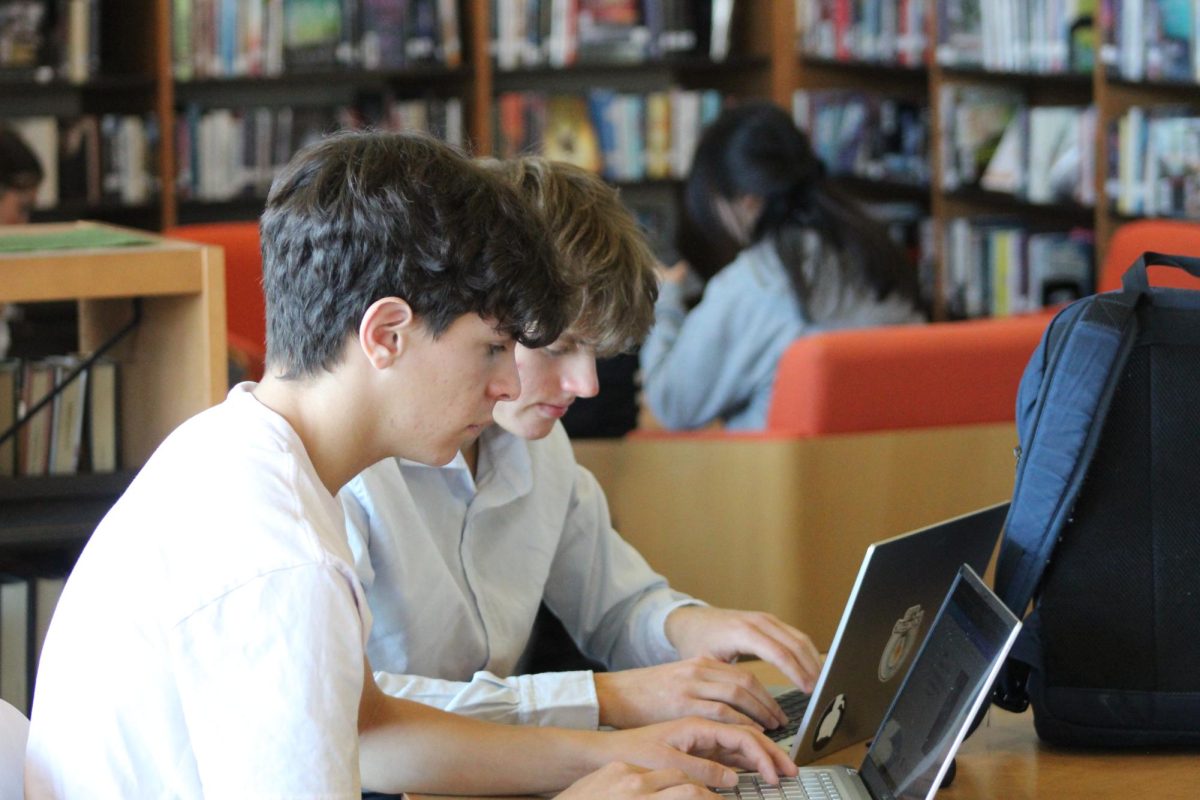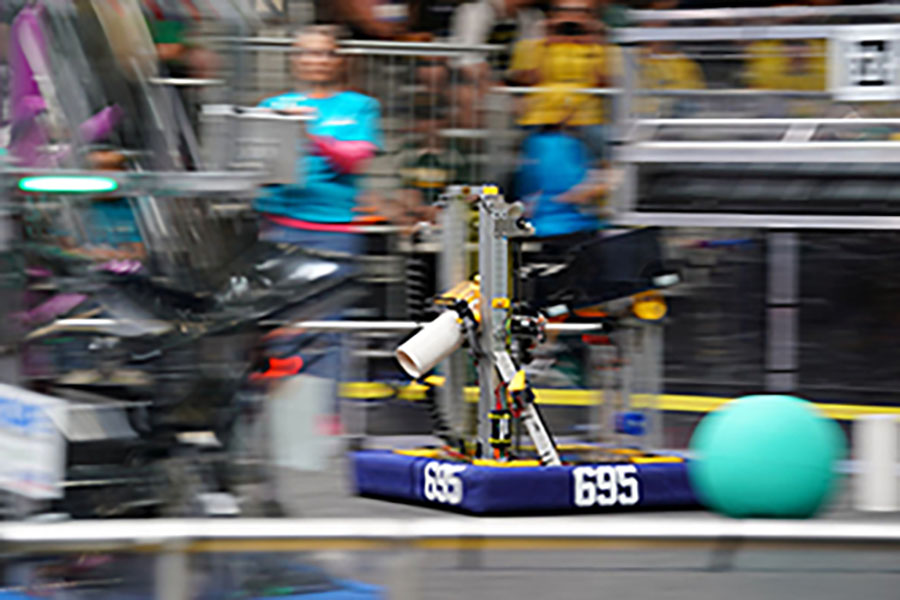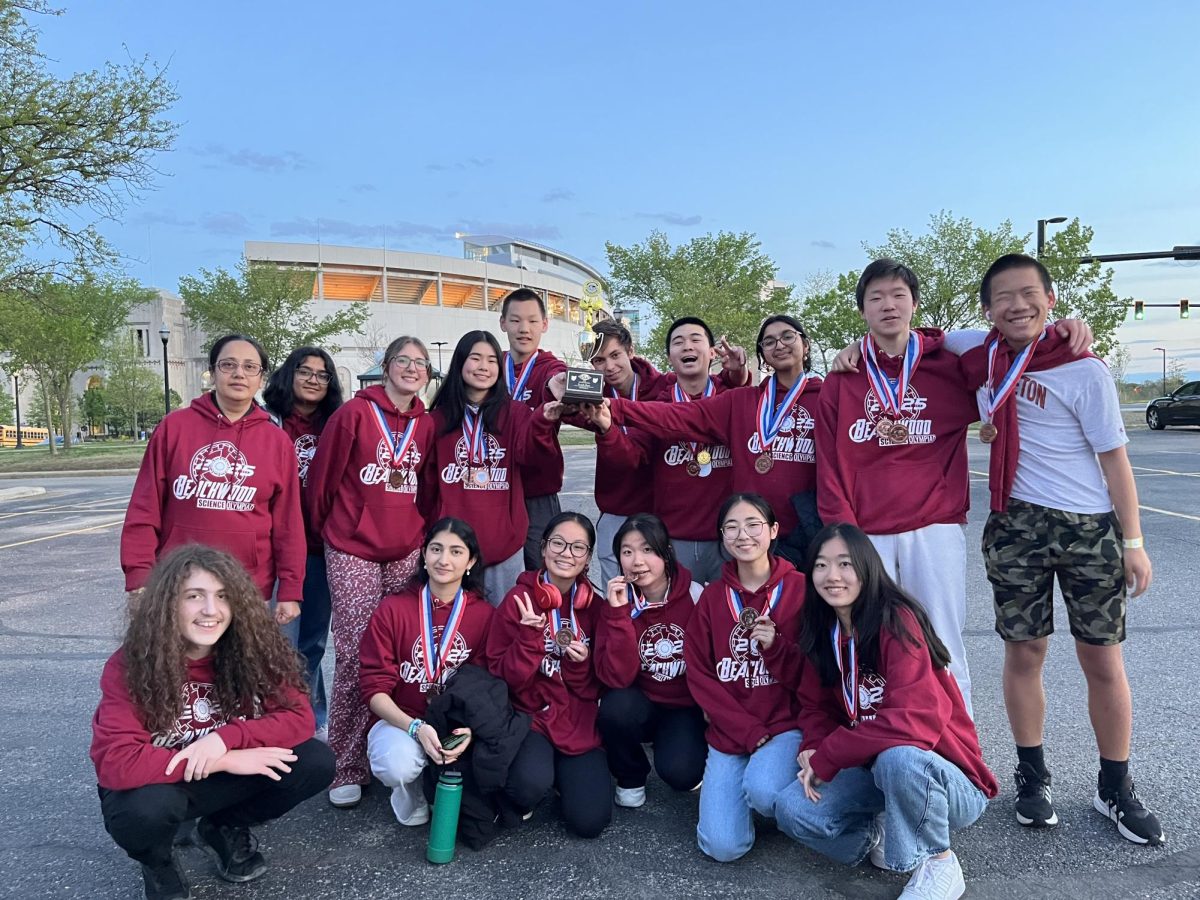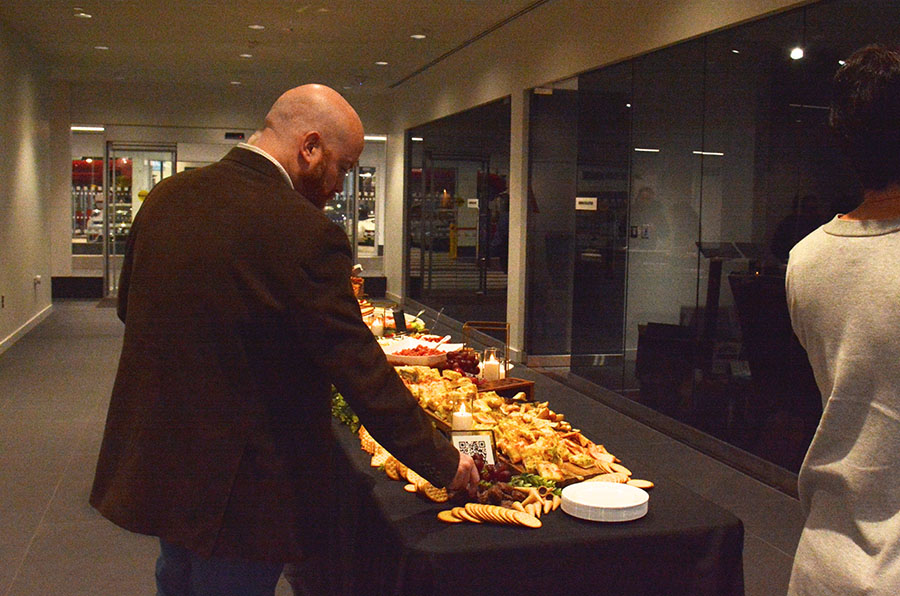
By Michael Bohm, Staff Writer
By now, everyone knows about the big change in BHS’s cafeteria: plastic trays.
It may not seem like much, but it’s going to cut down a great amount of styrofoam trays in landfills. School districts around t he nation are using up hundreds of thousands of trays each school year. Yet it was the
goal of Beachwood’s ecology club to make a difference. Scott Remer is a member of the club, and says
that Styrofoam in landfills is very unhealthy for the environment. “Styrofoam takes about 2 million
years to decompose,” said Remer, “so, when we were using these Styrofoam trays, essentially what we were doing was we were putting something that is, for all intent and purposes, non biodegradable into our landfills.”
Switching to reusable trays over biodegradable ones wasn’t a tough choice for Beachwood’s Superintendent Dr. Markwardt. “When it came time to look at the cafeteria, one of the things that we did was examine the cost of replacing our styrofoam products with paper products that are biodegradable. It’s very expensive,” said Markwardt, “and so, there you’re faced with an ethical dilemma. Do you spend twice the money to buy paper products or do you go ahead and pollute the landfills with the Styrofoam? This left only one choice, “The solution seemed to be go back to something that districts have done in years past; that is, to go back to the use of plastic trays…” But by no means was it done because it’s the cheapest option. “The investment in this case was a new dishwasher, which is somewhere around $20000,” said Markwardt.
Although it all seems great, some are a little concerned with just how sanitary the new conditions will be. “I’m kind of grossed out,” said Shauna Tepper, a junior at Beachwood, “I think it would be best if students
saw how the trays were washed… it would give assurance to see that they’re washed efficiently.” It’s
understandable, but while it grosses out many students who are unsure of just how well the trays are cleaned, it doesn’t bother others. “Why would that be gross?” asks Kevin Albrecht, another BHS junior, “don’t you reuse your plates at home, or do you throw them out?”
Cindy Matheis is the resident district manager with AVI food systems, and part of her job is to oversee the whole process of switching to these trays and assure all goes well. According to Matheis, this new industrial strength dishwasher is going to cut costs and the savings will increase every day. She said, “It will save us, financially, for the paper supplies. The styrofoam tray was running about 4 cents a piece,
so that will save us 4 cents a piece each day.” The new dishwasher is a decently sized conveyer belt, which
efficiently cleans each tray, “it uses a soap, then it does a rinse, and then it does a final temperature rinse that it has to go up to 180 degrees to make sure everything is sanitized,” said Matheis, “It typically takes, I’d say, about 10-15 seconds.”
The dishwasher is a product of Hobart, a company that makes various kitchenwares. According to
Hobart’s website, HobartCorp.com, this specific dishwasher has “the most efficient use of energy, water,
labor and floor space of any conveyor warewasher in the industry.”
Ultimately, the change to reusable trays was not only to become a more green school, but to also stress the importance of recycling, reusing and being greener individuals. According to Dr. Markwardt, the Board of Education took into mind “not just ‘what’s the environmental impact,’ but ‘what will our kids learn by recycling,’ in other words we have a company that was picking up our trash and said ‘we recycle
it ourselves, just dump it all in one bin’…and yet we have board members who said ‘what does that
teach our kids,’” said Markwardt, “how do the kids know it’s being recycled…how does that teach
our kids about the importance of recycling, sorting, and reusing?”
Just as the administration is attempting to increase students’ recycling, it is the goal of the
ecology club to keep escalating the many diverse ways of being greener. “In conjunction with some
of the other things that we plan on doing, [using these new trays] will [influence students to be greener],”
said Remer.
underneath so the cans will just drop Also, according to Remer, some of the new methods are adding more recycling bands, and can crushers. “We’re going to be mounting can crushers and hopefully that’s going to encourage recycling of cans because, it’s fun. It’s on the wall and students can say, ‘hey, let’s go crush a can,’ and we’ll put containers into there,” said Remer, “and that’s just an initial first step forward.”
Beyond recycling, the ecology club will also be putting up potted plants in all of the classrooms to give a small hint of the highly touted green room, which is fully greenfriendly. “We just want to take a
small piece of [the green room], and bring it into the other class rooms. Not to mention the positive affects
that having plants has in general,” said Remer, “it’s very soothing, the entire atmosphere [of the green
room].”
It is also the goal of the ecology club – that is planning to team up with Beachwood’s Green Dream to create awareness and improvement in recycling – to bring in an occasional speaker on the issue, along with having art contests and surveys all as means of increasing the amount of being green throughout the school.
So, with new trays now implemented into the cafeteria, look forward to more changes throughout
the rest of the school.









